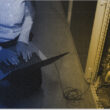In the world of insurance, especially in a market as dynamic as India, understanding the terminology can be a game-changer. Among the foundational concepts that every policyholder should be aware of are “peril” and “hazard.” Though often used interchangeably in casual conversation, these two terms have distinct meanings—and these distinctions can significantly impact your insurance coverage, claims, and premiums.
So, whether you are a homeowner insuring your flat in Mumbai, a business owner safeguarding your warehouse in Ahmedabad, or just someone looking to make smarter policy choices, this blog will help demystify the difference between peril and hazard in the Indian insurance context.
Understanding the Basics: What is a Peril?
In insurance terminology, a peril is the actual event or risk that causes a loss or damage. Think of it as the cause of a claim.
Common Perils in India:
- Fire
- Floods
- Earthquake
- Theft
- Riot or strike
- Cyclone
- Lightning
- Accidental damage
For instance, if a fire breaks out in your house and causes damage to your property, fire is the peril responsible for that loss. It’s the specific event that triggered the claim.
Real-life example:
During the Chennai floods in 2015, thousands of homes and offices were damaged. For those who had a comprehensive home or Commercial Property Insurance Policy that covered floods, the flood was the peril, and the policy responded accordingly.
What is a Hazard?
If peril is the “what happened,” then hazard is the “why it happened” or “what increased the chances of it happening.” A hazard is a condition or situation that increases the likelihood or severity of a peril.
Hazards are generally divided into three categories:
a) Physical Hazards
These are tangible, visible conditions that make the occurrence of a peril more likely or severe.
Examples:
- Leaky gas pipe (increases risk of fire)
- Faulty electrical wiring (increases risk of fire)
- A slippery staircase (increases risk of injury)
b) Moral Hazards
These arise from the behaviour or intentions of the insured. It refers to instances where a person acts irresponsibly or dishonestly because they know they are covered by insurance.
Examples:
- Deliberately setting property on fire to claim insurance
- Falsifying a theft report
- Exaggerating the value of damaged goods
c) Morale Hazards
This refers to carelessness or indifference to risk simply because insurance is in place.
Examples:
- Leaving your vehicle unlocked in a high-crime area
- Not fixing broken locks or safety systems because you believe insurance will handle everything
The Interplay Between Peril and Hazard
Understanding the relationship between peril and hazard is crucial because hazards contribute to the occurrence of perils. Insurance companies carefully evaluate both when issuing policies or calculating premiums.
Insurance Underwriting and Risk Assessment
When an insurer assesses your application, they evaluate the potential perils and the existing hazards. If hazards are significant, you may face:
- Higher premiums
- Deductibles
- Coverage exclusions
- Even denial of coverage
Example: If your property is in a flood-prone area and has poor drainage (a physical hazard), the peril of flood becomes a heightened risk, and the insurer may charge a higher premium or impose specific terms.
Perils in Insurance Policies: Named vs. Open Perils
Perils in Indian insurance policies are typically categorised in one of two ways:
a) Named Perils
In this type, only the specific perils mentioned in the policy are covered.
Example: The Standard Fire and Special Perils Policy in India generally lists:
- Fire
- Explosion
- Lightning
- Riot and strike
- Impact damage (by rail or road vehicle not belonging to the insured or their employees)
- Storm, cyclone, typhoon, hurricane
- Flood and inundation
- Earthquake (offered as an add-on)
If something not listed—say, a landslide—occurs, and it’s not covered as an add-on, the policy will not respond.
b) Open Perils (All-Risk Policies)
Here, all perils are covered unless specifically excluded in the policy. These policies are more comprehensive but typically come with higher premiums.
Example: A high-value electronics insurance policy might be structured as an “all-risk” cover, meaning any damage to the device—unless excluded—is covered.
Hazards and Premiums: How They Affect Your Pocket
Insurers in India are increasingly data-driven. They use advanced analytics, geospatial tools, and insights from organisations like the Insurance Information Bureau of India (IIB) to evaluate risk profiles and hazard exposure.
Key Ways Hazards Impact Premiums:
- Higher the hazard, higher the premium: If you run a factory using combustible chemicals, the fire hazard increases, and so does your insurance premium.
- Safety measures can reduce risk: Installing CCTV cameras, smoke detectors, sprinklers, and fire extinguishers can lower hazard exposure and earn premium discounts.
- Behavioural history matters: Individuals or businesses with a record of frequent or questionable claims may be flagged for moral hazards, potentially leading to higher rates or declined renewals.
Regulatory Framework in India
Insurance in India is regulated by the Insurance Regulatory and Development Authority of India (IRDAI). Insurers must follow strict guidelines when designing and marketing their products.
While IRDAI does not publicly define “peril” and “hazard” for policyholders, these concepts are heavily embedded in:
- Internal underwriting practices
- Product design
- Risk evaluation tools
The Standard Fire and Special Perils Policy is a regulatory product that clearly outlines covered perils and allows for optional extensions, such as earthquake cover.
Importance of Disclosure: Hazard Transparency
Many policyholders underestimate the importance of disclosing hazards during policy purchase. Omitting relevant facts—whether intentionally or not—can result in a denied claim.
A Common Pitfall:
You are a restaurant owner in Bengaluru. You apply for Fire Insurance but fail to disclose that your kitchen uses a traditional open-flame tandoor. Later, a fire breaks out. During the claim investigation, the insurer discovers the undisclosed hazard and rejects the claim on grounds of material misrepresentation.
Lesson: Always disclose all relevant hazards—no matter how insignificant they may seem. Full transparency can safeguard your claims and avoid legal disputes.
Case Studies from India
These examples are illustrative of how peril and hazard are treated in real-world Indian insurance scenarios.
Case 1: Peril with Hazard Ignored
In 2021, a warehouse in Gurugram storing electronic goods caught fire. The cause was a short circuit—a peril. However, the warehouse lacked basic fire safety systems—a physical hazard. The insurer only paid a partial claim, citing breach of safety protocols and underinsurance.
Case 2: Hazard Disclosure Saves the Day
A Chennai-based textile unit disclosed its use of volatile dyes and solvents when taking out a fire policy. When a minor fire broke out due to a chemical reaction, the insurer settled the full claim without delay, citing the policyholder’s transparent disclosure during underwriting.
Tips to Manage Hazards and Reduce Risk
If you are serious about risk management and insurance optimisation, here are some practical tips:
- Conduct regular risk assessments for your property or business
- Install safety features: fire alarms, smoke detectors, CCTV, flood barriers
- Train employees in hazard identification and safety protocols
- Stay compliant with all statutory and local regulations (e.g., fire safety certificates, pollution controls)
- Consult an insurance advisor to tailor policies based on your risk profile
Final Thoughts
Understanding the difference between peril and hazard is not just about sounding informed—it’s about protecting your assets, reducing risk, and ensuring smooth claims processing.
As India’s insurance landscape evolves—facing new threats like cyber incidents, extreme weather events, and urban challenges—recognising how perils and hazards work together gives you the confidence to:
- Select appropriate coverage
- Avoid unpleasant surprises during claims
- Pay fair premiums
- Run your home or business with peace of mind
So, the next time someone asks, “Is that a peril or a hazard?”, you won’t just know the answer—you will understand why it matters.







